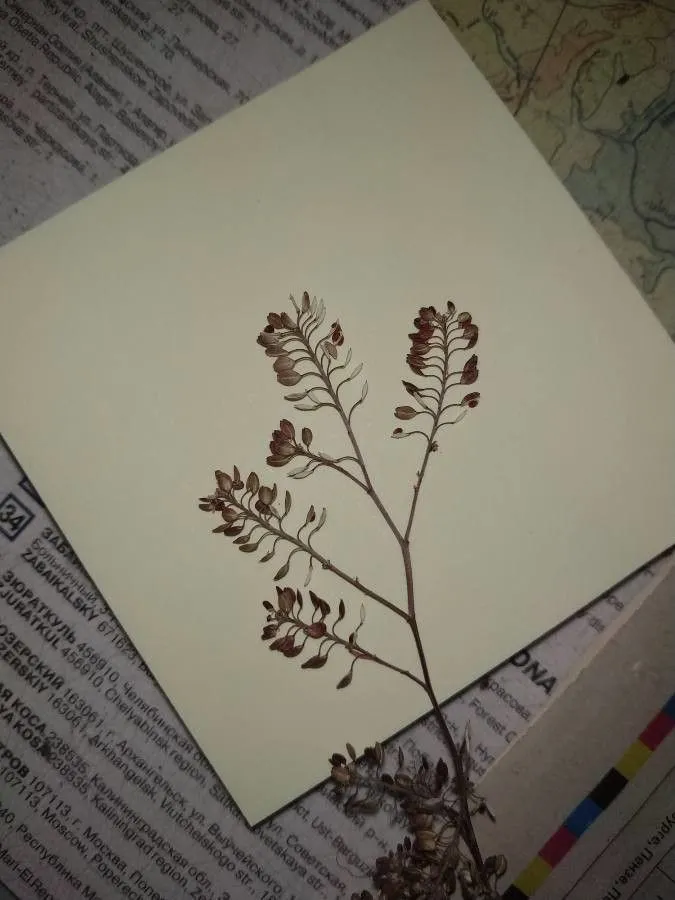
Author: Willd.
Bibliography: Sp. Pl., ed. 4, 3: 439 (1800)
Year: 1800
Status: accepted
Rank: species
Genus: Lepidium
Vegetable: False
Observations: E. Europe to Temp. Asia
Pepperweed, scientifically known as Lepidium apetalum, is a fascinating member of the Brassicaceae family. Noted in the fourth edition of “Species Plantarum” on page 439 in the year 1800 by the reputable botanist Willd., this plant boasts a rich botanical history.
Originating from Eastern Europe and extending to temperate regions of Asia, Pepperweed thrives in a variety of environments within these regions. Its adaptability and resilience make it a species of interest in both ecological studies and horticultural practices.
Pepperweed is easily recognizable through its distinct physical characteristics. It generally features small, delicate white or pale flowers, though true to its species name ‘apetalum,’ these flowers may appear somewhat inconspicuous as the name suggests a lack of prominent petals. The foliage is typically composed of basal rosettes with elongated stems supporting the flowers, a common trait in the mustard family to which it belongs.
The plant’s common name, Pepperweed, hints at its traditional uses, particularly its seeds that have a peppery flavor and were historically utilized as a spice. This gastronomic utility is a common trait shared among many members of the Brassicaceae family, which includes well-known culinary relatives like mustard and horseradish.
Despite its understated appearance, Pepperweed plays a significant role in its native ecosystems. It serves as a source of nutrition for various insects and wildlife. Moreover, it has been studied for its potential medicinal properties, adding to its ecological and economic value.
In summary, Lepidium apetalum is a notable species within the Brassicaceae family, with a storied history and important ecological roles in its native Eastern European to Asian temperate habitats. Its subtle beauty, practical uses, and botanical importance continue to make it a subject of interest for botanists and plant enthusiasts alike.
Eng: pepperweed
En: Pepperweed
Taken Oct 30, 2019 by Gabriel (cc-by-sa)
Taken Oct 8, 2020 by Marco Obando (cc-by-sa)
© copyright of the Board of Trustees of the Royal Botanic Gardens, Kew.
© copyright of the Board of Trustees of the Royal Botanic Gardens, Kew.
© copyright of the Board of Trustees of the Royal Botanic Gardens, Kew.
Growth habit>: Forb/herb
Family: Myrtaceae Author: (F.Muell.) K.D.Hill & L.A.S.Johnson Bibliography: Telopea 6: 402 (1995) Year: 1995 Status:…
Family: Rubiaceae Author: Pierre ex A.Froehner Bibliography: Notizbl. Bot. Gart. Berlin-Dahlem 1: 237 (1897) Year:…
Family: Sapindaceae Author: Koidz. Bibliography: J. Coll. Sci. Imp. Univ. Tokyo 32(1): 38 (1911) Year:…
Family: Asteraceae Author: A.Gray Bibliography: Pacif. Railr. Rep.: 107 (1857) Year: 1857 Status: accepted Rank:…
Family: Fabaceae Author: Medik. Bibliography: Vorles. Churpfälz. Phys.-Ökon. Ges. 2: 398 (1787) Year: 1787 Status:…
Family: Aspleniaceae Author: (Cav.) Alston Bibliography: Bull. Misc. Inform. Kew 1932: 309 (1932) Year: 1932…